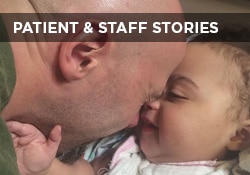This website uses cookies so that we can provide you with the best user experience possible. Cookie information is stored in your browser and performs functions such as recognising you when you return to our website and helping our team to understand which sections of the website you find most interesting and useful.

Susan E. Mazer, Ph.D. Blog
Thoughts and ideas on healthcare
Hi, and welcome to my blog! I'm Susan E. Mazer -- a knowledge expert and thought leader on how the environment of care impacts the patient experience. Topics I write about include safety, satisfaction, hospital noise, nursing, care at the bedside, and much more.
To Follow or Not: The Rules About Patient Safety
June 17, 2016
 For the very first time ever, I was called for jury duty last week in the 2nd District Court in Washoe County, Nevada.
For the very first time ever, I was called for jury duty last week in the 2nd District Court in Washoe County, Nevada.
I tried to think of some great excuse to get out of it, but, alas, none was to be had. So, I showed up on Monday, one among 45 other potential jurors.
As luck would have it, I was chosen for the panel. For four hours, we were asked questions that revealed that this was a medical negligence case, and something about sepsis, and something else about patient safety protocols and hernia operations.
How Important Is It to Follow Patient Safety Rules?
The attorney for the plaintiff asked an interesting set of questions, starting with, “How important is it to follow safety rules? On a scale of one to ten?”
“Do you think that you have a right to assume that others follow safety rules?” The examples she gave included staying inside traffic lanes and stopping at a stop sign.
Needless to say, everyone agreed that it was top of the scale, that we had a reasonable expectation that everyone around us would follow the rules, and that there was no excuse for not following them. Then, the attorney asked the same question about patient safety. Again, no excuse. Top of the list.
Given that medical errors are now identified as the third highest cause of death in the U.S., this was timely. It made me wonder if a medical error is the same as not following patient safety protocols.
There are several oaths in the medical community that address safety. One, attributed to the Hippocratic Oath is “Do no harm” as a dictum for medical practice. Another, from Florence Nightingale’s Notes on Hospitals states, “The Hospital shall do the sick no harm.”
Here’s my version, which has much broader implications: Do not allow unnecessary, avoidable harm come to any person.
This extends our obligations to all who find themselves inside the healthcare organization, clinical and non-clinical staff, as well as patients and friends/families before, during, and after hospital events.
Healthcare today is about a surgical team, nurses who work on the same unit, and multiple doctors and nurses who treat patients in the emergency room. So, the safety of a patient is a shared responsibility. And no one is off the hook for watching out for any patient whether or not the person is “his or her” patient.
Safety Begins and Ends With Everyone
The ways in which whole communities stay healthy and free from harm has everything to do with what happens at the hospital.
For example, a rigorous practices of disposing of contaminated needles has resulted in closed containers for disposal at the bedside in every room. And, communicable diseases identified at the hospital should stay in the hospital.
In truth, safety begins and ends with everyone throughout the community taking action and modeling safe practices. When MRSA was identified, hand-washing cloths to wipe off shopping carts suddenly appeared in supermarkets. Does everyone use them? Hardly.
Schools and universities should also be included on the list of community centers that can model safety. How often do students wash their hands throughout the day?
Do we have a right to expect (and demand) that everyone around us practice safety protocols to help keep all of us safe and healthy? I think so. What do you think?
P.S. If you like this post, please do me a favor and share on LinkedIn, Twitter, Facebook, etc. Also to get automatic notices when a new post is published, please subscribe below. No spam – just great content. Thanks!










